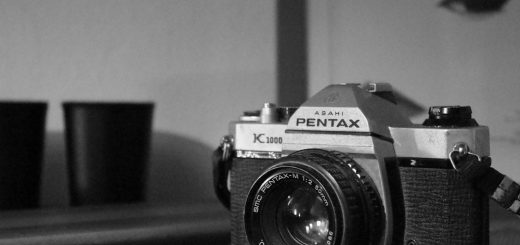[A] [B] [C] [D] [E] [F] [G] [H] [I] [J] [K] [L] [M] [N] [O] [P] [Q] [R] [S] [T] [U] [V] [W] [X] [Y] [Z]
Safelight – Lights found in a darkroom that will not expose light sensitive materials. Film cannot be exposed to any light before development, not even safelights.
Self-Timer – A feature on many cameras that allows the user around 10-seconds before the shot is taken. This is typically used in shots that involve the photographer.
Shutter – Blocks light from traveling through the lens and exposing film until it is opened during exposure. Shutters can be made of blades, a curtain, plate, or other movable covers and control the amount of time light is allowed through the lens.
Shutter Priority – An automatic setting that will automatically change the aperture depending on the chosen shutter speed.
Shutter Speed – How fast or slow the shutter opens and closes to expose the film behind the lens. Plays a pivotal role in motion photography.
Single-Lens Reflex – A camera with a single lens that is used for viewing and capturing the image. The image is reflected with a moveable mirror in the camera body that allows the photographer to see directly through the lens. The mirror flips up when the shutter is opened to allow light to expose the film.
Slide Film – Film that when processed shows a positive image. Also known as “reversal film” or “transparency film.”
SLR – Abbreviation for “single-lens reflex”
Snapshot – An image captured informally, usually with a disposal or quick shot camera.
Spot Meter – A type of light meter used to read reflected light in a concentrated area of a scene.
Stop – Short name for the numbers on an aperture, called f-stops. Going “up a stop” or “a stop down” refers to increasing or decreasing the aperture size.
Subject – The main object in the photograph, such as a person or thing. May also refer to the theme or topic discussed in the photograph.
Sunny 16 – A method for achieving exposure without a light meter on a sunny day by setting the aperture to f/16 and the appropriate shutter speed.














